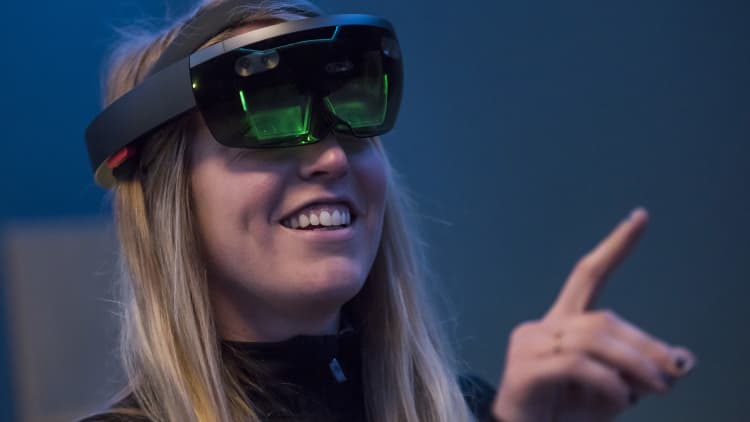
Microsoft declared its Windows 10 operating system was the best place for "mixed reality" computing at the Computex IT trade show in Taiwan on Wednesday. But what is mixed reality?
Mixed reality is another name for augmented reality, which merges the real and virtual world using virtual reality (VR) technology. According to CCS Insight, a mixed reality headset would place virtual objects in the real world and allow users to interact with them through gestures and voice commands.
At the keynote speech on Wednesday, several Microsoft executives promoted Windows Holographic, a computer operating system which could help lead the way in mixed reality technology.
"Today we focused on the next frontier – mixed reality. Providing devices with the ability to perceive the world, breaking down the barriers between virtual and physical reality, is what we call mixed reality," Terry Myerson, executive vice president for Windows and Devices Group, said in a blog post on Wednesday published after the speech.
"Imagine wearing a VR device and seeing your physical hands as you manipulate an object, working on the scanned 3-D image of a real object, or bringing in a holographic representation of another person into your virtual world so you can collaborate."
Ben Wood, chief of research at market information provider CCS Insight, outlined the differences between mixed and virtual reality.
"The main difference between the two technologies is that virtual reality is fully immersive and you are not particularly aware of the real world around you," he told CNBC in an email. "Augmented (mixed) reality enhances the world around you, overlaying information on top of your line of sight."
In March, Microsoft started selling the HoloLens, a wearable device that allows users to visualize and interact with holograms.
"Microsoft is clearly betting on augmented reality (or mixed reality as it prefers to call it) as a moon-shot project similar to some of the efforts being undertaken by Google and others on complex new technology challenges," Wood told CNBC.
"There are clearly synergies with augmented rather than virtual reality, given Microsoft's clear focus on enterprise-centric applications. Mixed reality solutions using Hololens lend themselves much more to this market opportunity than virtual reality, which will initially be driven by more consumer-centric applications such as games."
Several high-profile virtual reality devices are being released this year, such as the Oculus Rift. Expectations are high for the technology: Myerson said the market for VR devices is forecast to reach 80 million devices per year by 2020.



